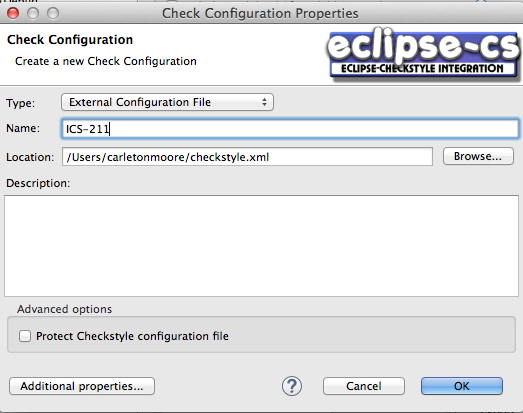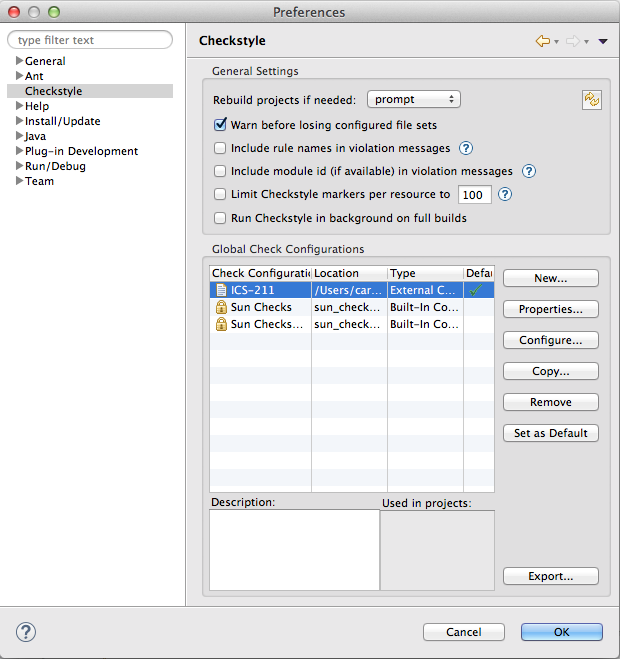Eclipse configuration guide
Download and install Eclipse
Download and install Eclipse Mars.1 from http://www.eclipse.org/downloads/.
Choose “Eclipse IDE for Java Developers”.
Do not install it into a file path containing spaces, such as (on Windows) c:\Program Files. Instead, install it in c:\eclipse, c:\ics111\eclipse, or whatever.
If you already have an older version of Eclipse installed, delete your ~/workspace/ directory or create a new one for Mars.
Install the ICS-111 Java formatter
This simplifies the creation of Java programs that satisfy our formatting conventions. Download ics111-format.xml to your local computer.
In Eclipse, select “Eclipse / Preferences / Java / Code Style / Formatter” to bring up the following window:

Now click “Import” and choose the file you just downloaded.
The “active profile” should now change to “ICS-SE”. Click “OK”. Now when you are editing Java source code, you can invoke “Source / Format” to reformat the Java source code according to our class conventions.
Install Checkstyle (Very very optional, but useful)
Like the formatter, Checkstyle helps ensure that your code implements our class coding conventions. Follow the instructions at http://eclipse-cs.sourceforge.net/downloads.html to install the Checkstyle Plugin for Eclipse.
You can install both the “Eclipse Checkstyle Plugin” as well as the “Extension for EclipseCS Plugin with Additional Checks”. To verify, go to “About Eclipse / Installation Details”. The window above shows the Checkstyle plugin.
Install the ICS-111 Checkstyle Ruleset
This task configures Checkstyle to our class’s specific coding conventions. Note: if you are updating checkstyle.xml rather than installing it for the first time, the easiest way is to simply delete all current projects from Eclipse, then delete the current checkstyle.xml configuration, then download and install the new version following the instructions below.
Download checkstyle.xml to your local computer.
In Eclipse, select “Eclipse / Preferences / Checkstyle”, then click “New..” to bring up the “Check Configuration Properties” window. Select “External Configuration File” as the Type, provide “ICS-111” as the Name, and browse to the file to fill the Location field.
The resulting dialog box should look like this:

Now click “OK” to load that configuration and return to the Checkstyle Preferences window. In that window, select the ICS-SE configuration and click “Set as Default”. The resulting dialog box should look like this:

Click OK to save these changes. Now the Project Properties dialog will include a Checkstyle pane where you can activate, deactivate, and customize the application of Checkstyle, as illustrated here:
